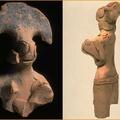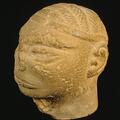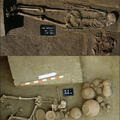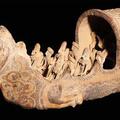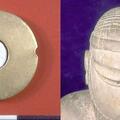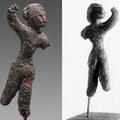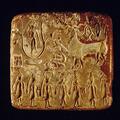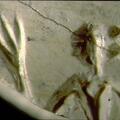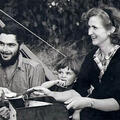One of the most evocative seals from Mohenjo-daro, depicting a deity with horned headdress and bangles on both arms, standing in a pipal (sacred fig) tree and looking down on a kneeling worshiper. A human head rests on a small stool and giant ram and seven figures in procession complete the narrative. Asko Parpola writes "An anthropomorphic figure has knelt in front of a fig tree, with hands raised in respectful salutation, prayer or worship. This reverence suggests the divinity of its object, another anthropomorphic figure standing inside the fig tree.

